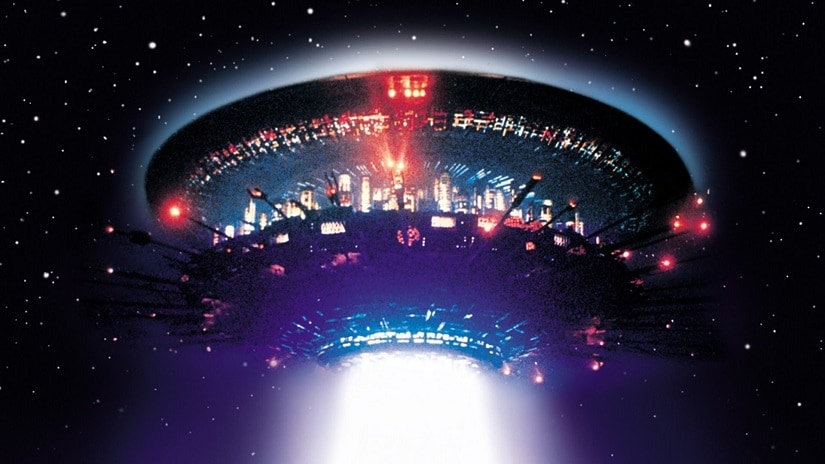Life is a film about an alien life which has just made a mark across the world. It is a horror film — which means that the emotions it arouses are extremely unpleasant — but it raises questions about the alien film’s meaning and the directions the genre can take. Also, it makes us wonder why sci-fi horror represents an attraction to the audience when we experience such nasty emotions while watching films like Life. While writing about the Hindi science fiction film (you can read that column here), I tried to show how science fiction originated in colonial expansion, the conquering of new spaces leading the European imagination to also imagine new worlds elsewhere. The earliest science fiction novels therefore tried to deal with aliens as versions of Europeans in the colonies; aliens are as unfeeling about human beings in HG Wells’ The War of the Worlds (1897) as Europeans were in Africa or Asia in their nineteenth century conquests. [caption id=“attachment_3363416” align=“alignnone” width=“825”]  Ryan Reynolds, Jake Gyllenhaal and Rebecca Ferguson in ‘Life’[/caption] The alien in cinema has come a long way since the earliest fictions and audiences have become familiar with the ways in which they can be represented, and it would be interesting to categorise them. Only countries which see themselves as world powers are usually obsessed with aliens and there is perhaps some conceit involved here — other countries cannot enter into dialogue with such a power and only an alien could be an equal! This means that alien films, by and large, come from the United States or Russia although one does see an occasional Koi… Mil Gaya (2003) or District 9 (2009), which is from South Africa. If one were to categorise examples from the alien film correctly, one must disregard the allegory which merely gives contemporary issues the clothing of sci-fi. It is necessary that true science fiction should excite the imagination through some speculation and sci-fi as allegory does not do that. Take, for instance, James Cameron’s Avatar (2009); this film is basically about ecological issues and the plundering of natural resources in the name of progress. The aliens in Avatar are, in fact, pictured very much as Native Americans were, riding animals akin to flying horses and being in harmony with nature. If the allegory is excluded from sci-fi, we must also similarly disregard the satire/parody which pokes fun at the contemporary in the guise of being about scientific/ technological possibilities. Tim Burton’s Mars Attacks (1996) can be read as a parody of the alien film because it is so deliberately tacky, while Paul Verhoeven’s brilliant Starship Troopers (1997) about humankind fighting armies of bugs in another planetary system is a wicked political satire on Western military interventions elsewhere. ‘Bugs’ also correspond to how the US military might regard its adversaries in places like Afghanistan, Iraq or Libya. The final scene in which the leader of the bug community is captured alive and soldiers get ‘selfies’ taken with him also anticipates the fates of Saddam and Gaddafi. An important aspect of these categories (allegory and satire) is that they do not excite our visual/intellectual curiosity. [caption id=“attachment_3363422” align=“alignnone” width=“825”]  Close Encounters of the Third Kind (1977) didn’t see aliens as a threat[/caption] Alien sci-fi is not necessarily about aliens as threats, as Spielberg’s Close Encounters of the Third Kind (1977) and ET: The Extra-Terrestrial (1982) demonstrated. Still, there is something in visual terms about a threatening alien that a friendly one cannot match. Close Encounters was able to provide sumptuous spectacle, but only a technologically empowered alien with wicked intentions usually provides the impetus for true excitement. ET was a singular disappointment in visual terms since it was closer to a fairy tale about children befriending a lovable monster (like Shrek). Once we get to the ‘hostile alien’ as a category, we are left only with action films like Predator (1987) with Schwarzenegger, disaster films like Roland Emmerich’s Independence Day (1996) and horror films like Ridley Scott’s Alien (1979). All these categories excite our curiosity; the action film visualises the higher powers an alien might possess and how they could be overcome, while the disaster film follows the same path, but on a gigantic scale. Overcoming human disadvantages through small ingenuities is the way both the action and the disaster film conclude, and it is necessary that the endings should be reassuring. But if ‘humankind will finally triumph’ is the inevitable conclusion, the horror film is notably different. If the alien disaster film deals with a political threat (our society treated the way we treat others) the alien horror film goes deep into our psyche to find latent fears we are not even aware of. In Ridley Scott’s Alien, the monster latches on to the face of someone and lays eggs inside the person’s vitals so that a monster bursts out of the person’s thorax when the egg hatches. The sense of someone’s body being contaminated by a foreign organism is a ploy used frequently in the horror film (as in David Cronenberg’s The Fly, 1986) and the reason it is deeply disturbing is arguably that we regard our bodies as receptacles for what ‘we are’ spiritually and the thought of a foreign living agency residing in it disturbs our sense of who we are. Even the thought of a tape worm living in our intestines is revolting! Life (director: Daniel Espinoza) derives largely from Alien and deals with earth dug up from from Mars found to contain a microorganism. The microorganism is carefully nurtured by the scientists until it grows and grows and gradually assumes the threat of a monster. The film includes implausible elements which are not explained satisfactorily and it may not be remembered for very long. But given these negative aspects, we need to understand why it is so disturbing visually and at the same time so fascinating. [caption id=“attachment_3363424” align=“alignnone” width=“825”]  Scott Ridley’s ‘Alien’[/caption] What the film does, is to begin in a very realistically conceived space station orbiting Mars — a capsule launched from Mars is due to reach them very shortly. This capsule contains earth from the Red Planet which is to be examined for possible signs of life. The first part of the film pays great attention to the procedures involved in determining whether any cellular life can be identified in the earth. When it is found, it is discovered to be inert or dead and is only a single cell. The scientists try raising the temperature from minus 100 degrees Celsius to about room temperature and there is still no activity. They now change the atmosphere to something resembling that of the Earth eons ago and find that the organism responds. All this is fascinating and we are drawn immediately into the film but after this initial establishment of the threat the film goes along like Alien, predictably, with interminable chase sequences — the scientist-astronauts tracking the monster or the monster chasing them. Life adds another element to Alien which is to have the monster shaped like a starfish with more tentacles and allowing it to crawl along the body of an astronaut in a space suit, and trying to get in. The kind of actors the alien horror film uses is the very opposite of those used by the alien disaster film and one cannot imagine Tom Cruise or Schwarzenegger having monsters bursting out of their respective thoraxes. The downbeat moods of the narrative demand actors who seem tired and vulnerable — like John Hurt and Sigourney Weaver in Alien and Jake Gyllenhaal in Life. This brings us once again to what attraction a genre can have when it deals with tired humankind being defeated by something horrific which also appears invincible. One conjecture about the monster in alien films is that it is not the monster the audience wishes to see but that it is only a by-product of the curiosity aroused by the central scientific proposition. The unease caused by the monster guarantees belief in the scientific proposition, as it were. The monster is perhaps like a bitter pill which makes us believe in a cure. The sight of alien life being discovered in front of our eyes is something only cinema affords us; although we see it happening time and again on the screen, we see it afresh each time as though we did not expect it because each film creates a world of its own. What look for in an alien horror film is to have our curiosity satisfied and it is only something which carries a hint of danger that makes us most curious. As an instance, it is the large carnivores that we most wish to see in the zoo. We go to the alien horror film to satisfy our curiosity and it is only its unpleasantness which finally quenches it. MK Raghavendra is a Swarna Kamal winning film scholar and author of The Oxford India Short Introduction to Bollywood (2016)
As in the Ryan Reynolds, Jake Gyllenhaal and Rebecca Ferguson starrer Life, the alien horror film goes deep into our psyche to find latent fears we are not even aware of
Advertisement
End of Article


)
)
)
)
)
)
)
)
)



